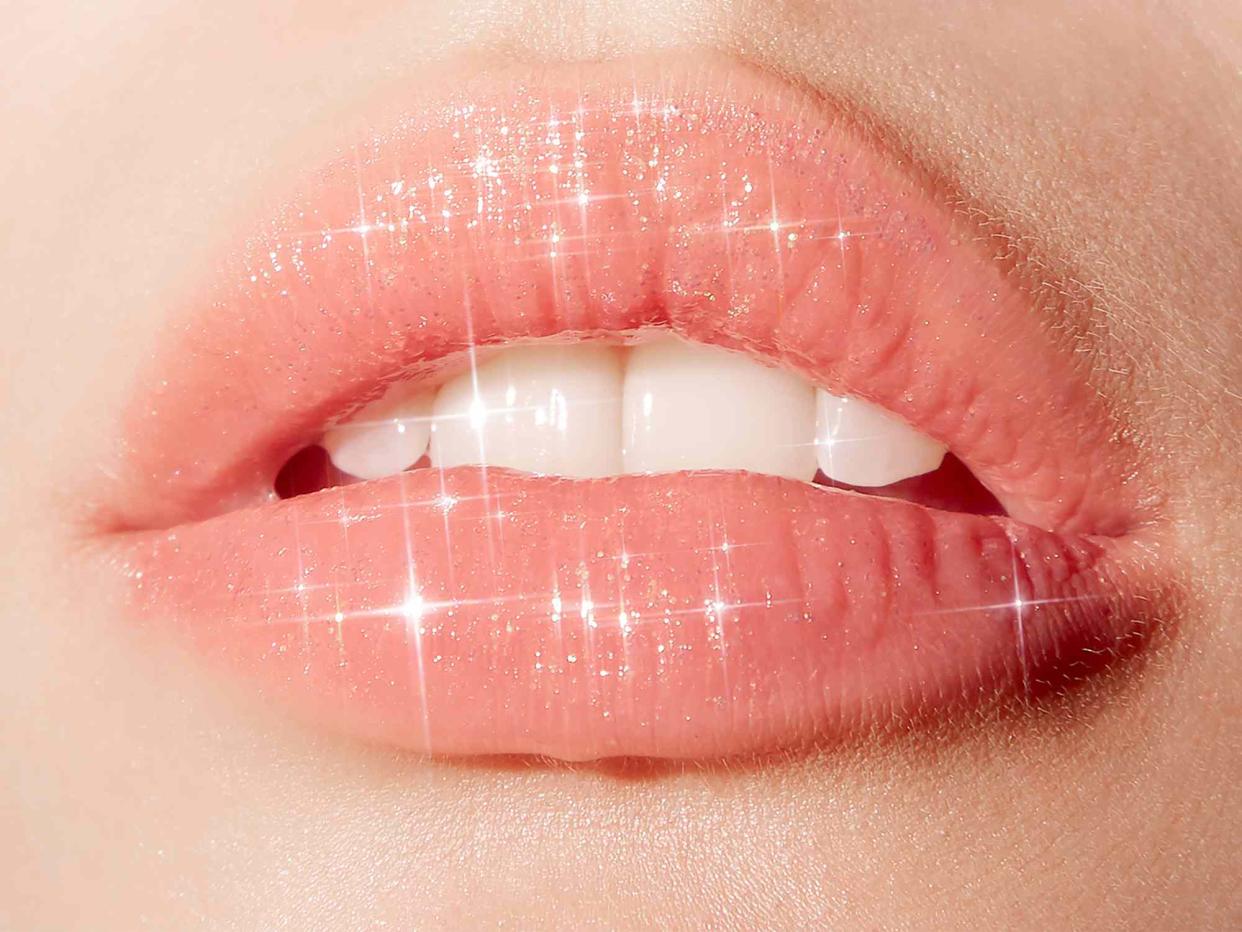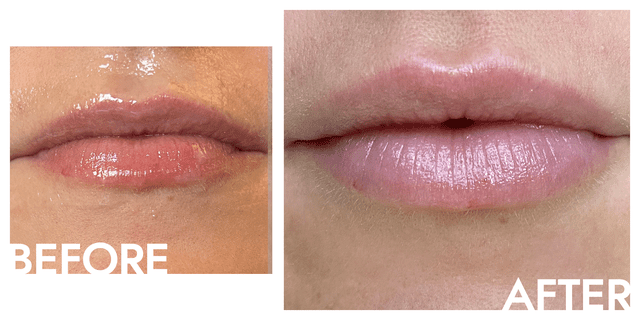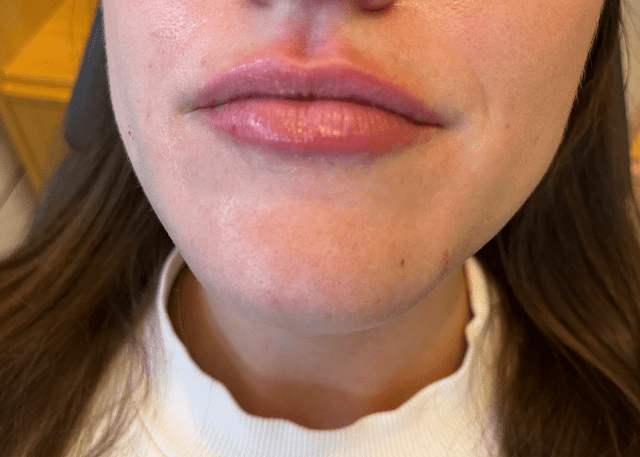Lip Fillers 101: The Benefits, Risks, Cost, and Results to Expect

Stocksy
Fact checked by Michelle RegaladoReviewed by Julia A. Siegel, MD
For those looking to slightly—or drastically—increase the volume of their lips, getting lip filler is, by far, the most effective method. For the most part, lip filler is safe when injected by a board-certified physician, and the results can be super customizable (from a more natural pout to full, voluminous lips). However, getting your lips done can—in rare cases or when injected by someone unqualified—can also come with complications to be aware of.
If you're thinking about getting lip filler, it's important to fully understand where to go, the benefits, cost, risks, and aftercare before getting injected. So, ahead, we tapped two plastic surgeons and a dermatologist to explain everything you need to know about lip filler.
Meet the Experts
David Shafer, MD, is a double board-certified plastic surgeon and founder of Shafer Clinic Fifth Avenue.
Michael Lin, MD, is a Los Angeles-based board-certified dermatologist who specializes in cosmetic and medical dermatology.
Nina Naidu, MD, is a New York-based board-certified plastic surgeon specializing in aesthetic plastic surgery of the breast and body.
What Is Lip Filler?
Lip fillers—also called lip injections—refers to the process of filling the lips with material such as hyaluronic acid to create a fuller appearance, says Dr. Naidu. "And although we often think of them in relation to patients who desire increased volume, they can also be used to correct uneven lips, lift the corners of the mouth, and smooth out lip wrinkles, which become more prominent with age." Injection materials can also include body fat or implants, although hyaluronic acid fillers are the most common type of filler used in lip treatments.
Lip Filler Before and After
As you can see in the below photo, lip fillers can create a noticeably fuller appearance in the upper and lower lip, as well as an overall "poutier" appearance (not the larger gap between the upper and bottom lip in a resting position). However, it's important to note that a qualified physician—which is the only person that should perform filler—will not be willing to overfill the lips. The goal is subtle fullness that enhances the lips without creating a "duck-like" appearance.

Byrdie
The Benefits
While lip fillers have become synonymous with pumping up the volume, they come with a number of other benefits.
Evens out asymmetrical lip shapes
Adds natural fullness to desired areas
Reduces the appearance of fine lines on the lips and surrounding mouth area
Customizable based on needs and desires
Reversible if results are not desirable
Types of Lip Filler
There are a number of different types and brand names of filler, and the type of filler chosen depends entirely on what your goal is for the treatment, whether it be to balance out the shape of your lips or add fullness and structure."The brand names that some people may be familiar with are Juvederm and Restylane," says Dr. Shafer. "Historically, substances such as collagen and silicone were injected into the lips, but the modern hyaluronic acid-based fillers have proven superior in terms of biocompatibility and patient safety," he adds.
For the most part, your board-certified provider will choose which injectable filler is right for you, so you don't have to worry too much about making that decision. But, in general, Juvederm is described as a smoother formula; it may last longer and can be a bit pricier. Restylane on the other hand has a more granular feel and is favored for its ability to stay put, making it ideal for filling specific spots of volume loss.
How to Prepare for an Appointment
First things first: the consultation. “When a patient comes in asking for fuller lips, I like to start by discussing how they would like their lips to look,” Dr. Lin says. “This step is extremely important because I want to make sure that what they are looking for is achievable and will match the overall shape and structure of their face.” For example, if someone has smaller facial features, they may look strange with lips that are too full. “Different facial structures will dictate what lip shape and volume will be appropriate,” he says. “The lip shape is actually more important than the volume.”
Although it's a little different than bringing in an inspirational photo for a haircut, having some reference photos to show your physician can be helpful. This will give them a better idea of the outcome you're hoping for and they can tell you whether or not it's achievable. You can also browse the Instagram of your injector to see what kind of work they do– this can be helpful in deciding whether they're the right fit for your aesthetic goals, too.
Another prep step is to avoid certain things before your injectable appointment. Some medications and supplements, like aspirin and Omega 3, have a blood thinning effect, which can worsen your recovery. Think: swelling and bruising, so it's best to skip those leading up to injection day. Alcohol is another culprit that's best left for 24-48 hours post-filler.
What to Expect During Your Lip Filler Appointment
"Following the consultation during which we determine the patient's goals, the lips are anesthetized and cleansed with alcohol," says Dr. Naidu. "Filler is injected with a tiny needle into the areas that need volume, and the material is massaged gently to prevent the formation of lumps." Each patient will vary in terms of how much filler they need– dictated by their anatomy– and the look that they are going for. "We never inject more than one milliliter (the size of most syringes) of filler during a given session," explains Dr. Naidu. The entire process usually takes about 30 minutes. A milliliter of filler is also called a "cc."
How Much Does Lip Filler Hurt?
The pain level will vary from person to person, but the lips are sensitive—injections typically feel like a very sharp pinch. According to Dr. Lin, most practitioners will use a topical numbing cream or local anesthetic like Lidocaine to ease the pain, and some fillers—like Juvederm and Restylane—even contain a small amount of numbing agent within the injectable itself. But you should still expect to feel some discomfort. (The good news is, it's all over in about 30 seconds.)
How Long They Last
According to Dr. Shafer, hyaluronic acid lip fillers generally last in the range of 6-12 months. He says it's not an "all or none" phenomenon; instead, the filler is metabolized over time. "A good analogy is when you fill the gas tank of your car. You don't wait until your car is empty before topping off the tank. Similarly, if the filler has a duration of one year, you may do some maintenance treatments every six months to maintain consistent results," Dr. Shafer explains.
Who Is a Candidate for Lip Filler?
It's important to remember, as Dr. Shafer points out, nobody "needs" lip filler. The treatment is an elective aesthetic procedure that is meant to enhance. You may find yourself interested in lip filler if you're looking to enhance your natural lip shape or plump up deflated lips. "Patients who have lost volume or definition with aging are great candidates," he adds.
On the other hand, there are some medical conditions that may deem you ineligible for lip filler. Your derm or plastic surgeon will be able to assess you at your consultation in order to give you a definitive answer, but certain autoimmune diseases, diabetes, or taking certain medication can complicate the healing process or cause your body to reject the filler entirely.
How to Choose an Injector
Although lip injections are minimally invasive, you're still putting something in your body and it's important to go to a qualified medical professional. It's best to avoid med spas and instead, opt for board-certified dermatologists and plastic surgeons, who are highly skilled in the field of aesthetics and injectables. Seeing a qualified, board-certified cosmetic physician—who are deeply educated in the intricate anatomy of the face and lips—will produce better results, minimize the risk of complications, and ensure you have an immediate throughline to doctor if you do experience a serious side effect.

Byrdie
Immediately after lip filler, minimal swelling and needle pockmarks can be expected.Potential Side Effects of Lip Filler
Like any cosmetic treatment, there's a risk of potential side effects. Here are a few to look out for when it comes to lip filler:
Swelling and Bruising: "With any injection treatment, there is risk of bruising (about 5% risk) and swelling to some degree in most patients," says Dr. Shafer.
Lumps: In rare cases, filler can form into "lumpy" or bead-like masses beneath the lip skin. "Lumps are rare, but can be treated with a special enzyme called hyaluronidase," Dr. Shafer points out.
Rarely, Necrosis: An inadvertent vascular injection can lead to tissue necrosis, which is extremely dangerous and should be treated by a physician right away. This risk is drastically minimized when you opp for a board-certified dermatologist or plastic surgeon instead of using med spas.
Unfavorable Aesthetic Outcome: Dr. Shafer says this could be a combination of injector inexperience, patient demands, and tissue reaction. "It’s always better to start slowly and conservatively and add more if needed than to inject too much and have over-inflated lips," he says.
The Cost
Price varies significantly depending on the city and injector, but lip injections generally cost $500 to $1000 (however, in more expensive areas like New York City, you can expect a range closer to $900 to $1500). The average cost for lip injections at Dr. Lin’s office falls around $550 to $650 for a 1-cc syringe. However, some people might want a fuller look—which requires an additional syringe (and again, more expensive areas like NYC and LA will jack up these prices a bit higher).
Aftercare and Recovery
As with anything needle-related, there are a few essential lip filler aftercare instructions. Here's what our experts recommend:
No makeup or lip products for at least 12 hours.
Avoid any hot beverages or spicy foods for several hours after the procedure.
Sleep with your head elevated on two pillows to help decrease swelling.
Avoid alcohol, Motrin, and Aspirin for the next 24 hours if you have bruising.
Avoid any dental procedures for 2 weeks.
No massage or firm pressure on the lips for at least a week.
The Final Takeaway
Lip fillers are a great option for plumping up deflated lips or enhancing your natural lip shape. The treatment has a fairly easy recovery process with minimal side effects (outside of bruising and swelling). Another plus is that it's not permanent. If you are unhappy with the final look for any reason, simply wait a few months, and your lips will be back to their original shape. All in all, if you are willing to spend a few hundred dollars on the treatment, it's a fairly harmless way to enhance one of your best natural features.
Read the original article on Byrdie.

